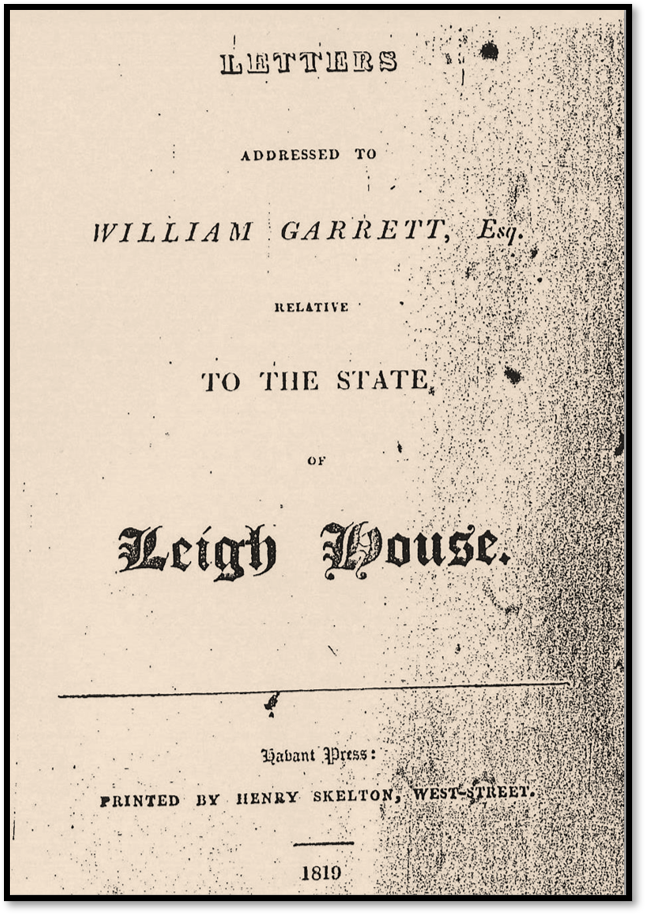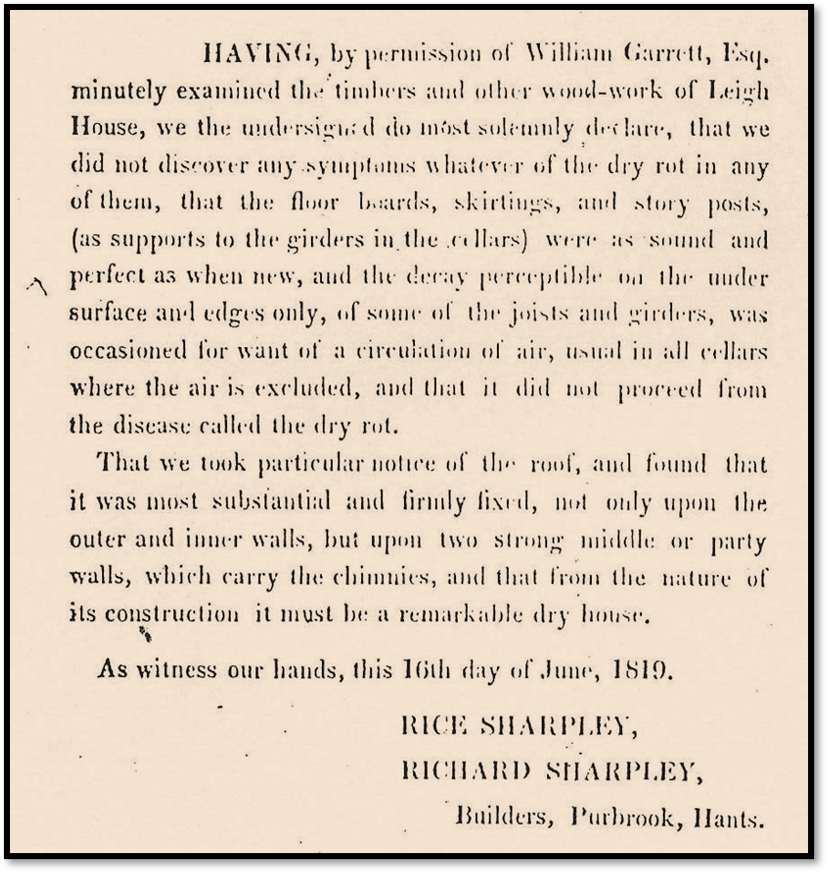In 1817, Garrett decided it was time to sell the house and move on to a new home in The Crescent, Bath.
Meaning business, on June 30th he puts up his wine collection for sale – 400 dozen bottles – that’s 4,800 in total!
On the 8th of May 1818, the sale of the estate is negotiated to the improbably named, John Julius Angerstein – a banker of uncertain, but certainly royal, Russian origins.
All good, we might think. But no. My Angerstein refuses to pay the valuation of the house, alleging ‘dry rot’ in the premises.
On the 27th of February, 1819, Garrett and Angerstein meet in court.
Mr Angerstein team make their case.
“Mr Kent, the architect, who built the house about 17 years ago, admitted a decay to exist in the cellars, which he called a sap-rot, occasioned more by air being excluded from the cellars, and the house being built on a quick sand, and had estimated its defects could be repaired at the expense of £500.”
Not to go down without a fight, Mr Garrett employs the help of Rice and Richard Sharpley, builders from Purbrook.
They review the property and send a letter detailing their findings and signed by many local peoples of good repute.
“HAVING, by permission of William Garrett, Esq. minutely examined the timbers and other wood-work of Leigh House, we the undersigned do most solemnly declare, that we did not discover any symptoms whatever of the dry rot in any of them, that the floor boards, skirtings, and story posts (as support to the girders in the cellars) were as sound and as perfect as when new, and the decay perceptible on the under surface and edges only, of some of the joists and girders, was occasioned for want of circulation of air, usual in all cellars where air is excluded, and that it did not proceed from the disease called the dry rot.
That we took particular notice of the roof, and found it was most substantial and firmly fixed, not only upon the outer and inner walls, but upon two strong middle of party walls, which carry chimneys, and that from the nature of its construction it must be a remarkable dry house.
As witness our hands, this 16th day of June, 1819.
RICE SHARPLEY,
RICHARD SHARPLEY,
Builders, Purbrook, Hants.”
After three days, the verdict is given – Angerstein is not compelled to go ahead with the purchase of the house.
(Audio TBC)



